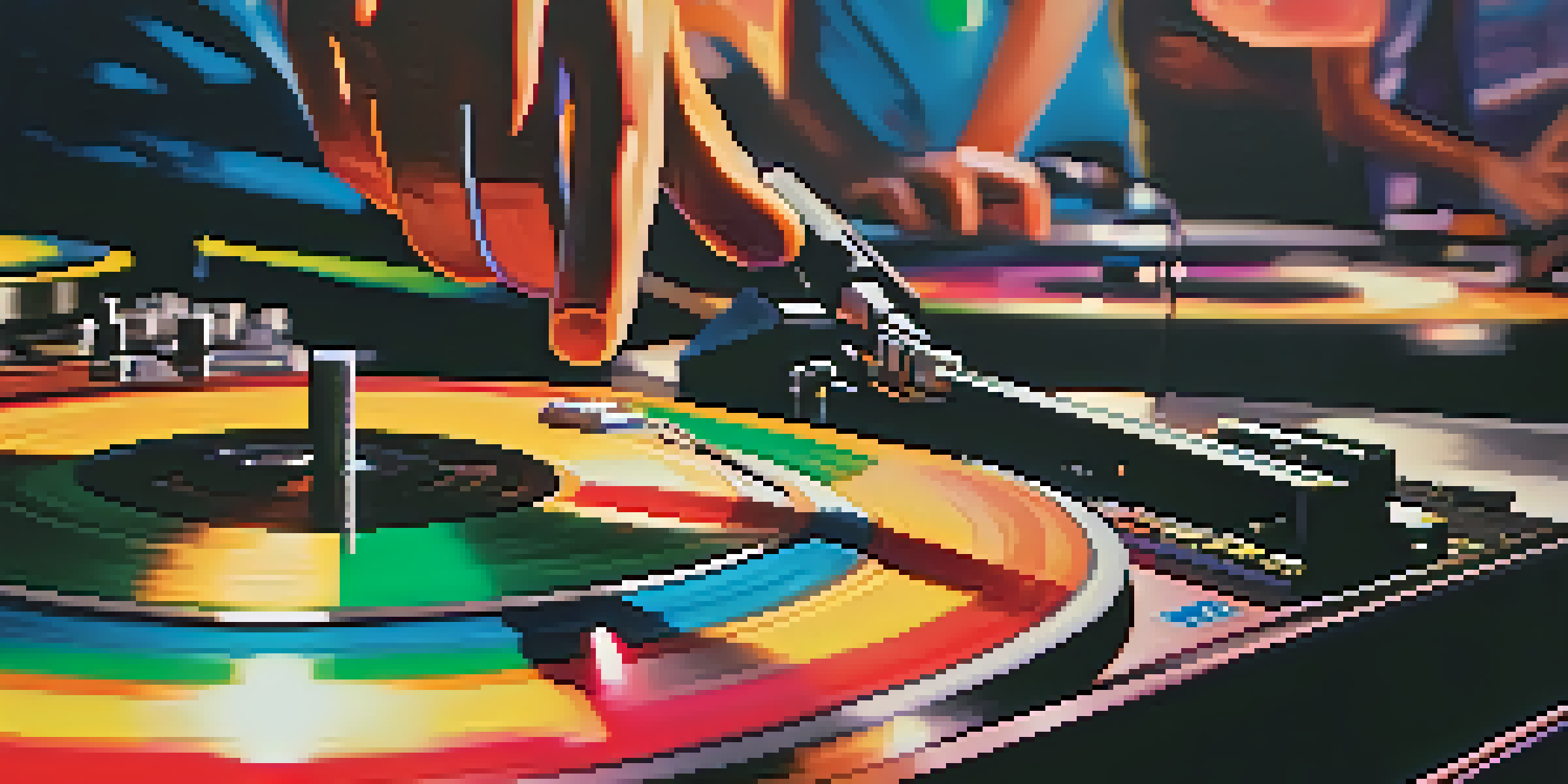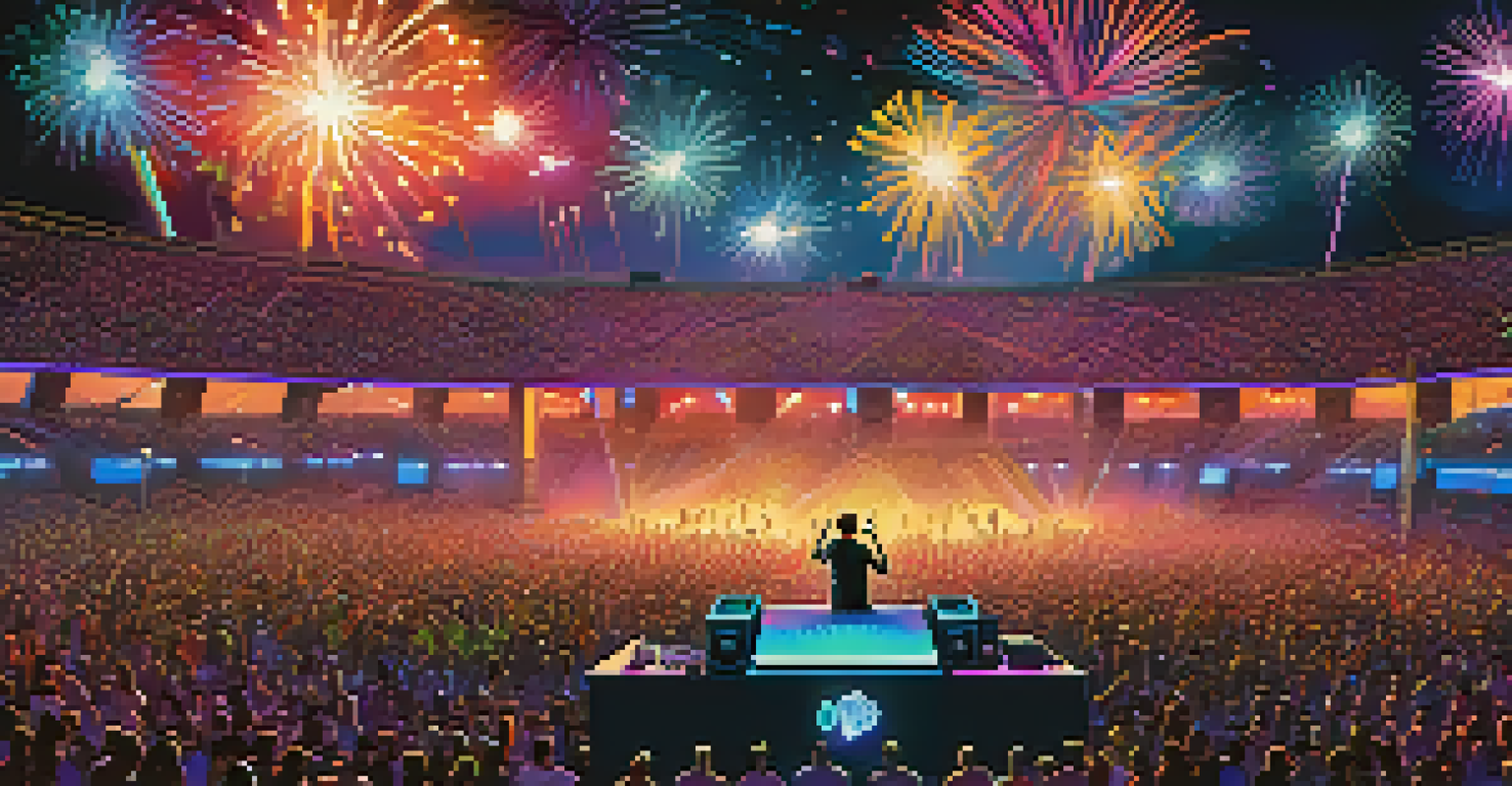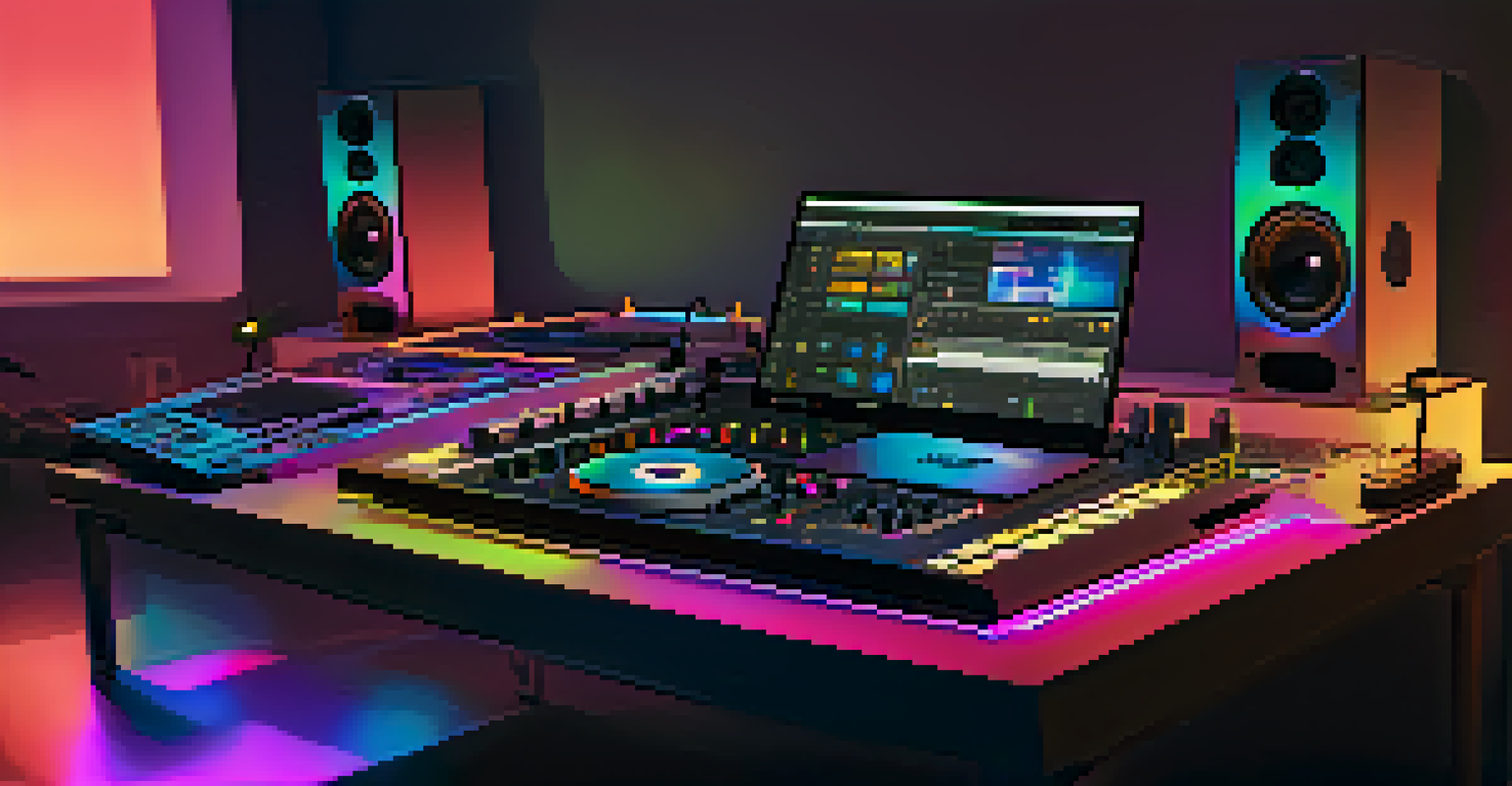The Evolution of DJing: From Vinyl to Digital Turntablism

The Birth of DJing: Vinyl Records Take Center Stage
DJing began in the 1940s with vinyl records, where DJs played music from turntables at parties and events. This marked the start of a creative journey, where mixing different tracks became an art form. Early pioneers like Francis Grasso and Kool Herc laid the groundwork for what would evolve into modern DJing.
DJing is not just about playing music; it’s about creating an atmosphere and a connection with the audience.
Vinyl records offered a tactile experience that many still cherish today. DJs learned to manipulate the records, using techniques like scratching and beatmatching to create seamless transitions. This hands-on approach not only defined the sound but also the culture surrounding DJing.
With the rise of disco in the 1970s, the role of the DJ became more prominent. They were not just playing music; they were crafting an entire atmosphere, making the dance floor a vibrant space for social interaction and self-expression.
Technological Innovations: The Shift to Digital
The advent of digital technology in the late 1990s changed the landscape of DJing dramatically. With the introduction of CDs and digital audio formats, DJs gained access to a wider range of music without the physical limitations of vinyl. This shift made it easier to carry a substantial music library, enabling more versatile performances.

Software like Serato and Traktor emerged, allowing DJs to mix tracks digitally while maintaining the feel of traditional turntablism. These programs offered features such as beat detection and looping, enhancing the DJ's creative capabilities. It was as if a whole new toolbox had been opened, offering endless possibilities.
DJing Evolved from Vinyl to Digital
DJing has transformed significantly from its origins with vinyl records to embracing digital technology, enhancing creativity and accessibility.
As technology continued to evolve, so did the way audiences experienced music. The rise of MP3s and streaming services meant DJs could access vast libraries online, further democratizing music access and influencing their setlists. This transition also ushered in a new era of accessibility for aspiring DJs.
The Art of Turntablism: Mastering the Craft
Turntablism emerged as a distinct art form, allowing DJs to showcase their skills through intricate techniques like scratching and beat juggling. This style focused on the turntable itself as an instrument, where DJs became musicians in their own right. Artists like DJ Qbert and A-Trak pushed the boundaries, turning the turntable into a canvas for musical expression.
The turntable is my instrument, and I paint with sound.
Competitions like the DMC World DJ Championships highlighted the artistry of turntablism, drawing attention to the technical prowess required to excel. These events not only celebrated skill but also fostered a sense of community among DJs. They inspired newcomers to explore this unique form of musical storytelling.
As turntablism gained recognition, it infiltrated various music genres, from hip-hop to electronic dance music (EDM). This fusion allowed DJs to collaborate with artists across genres, creating innovative sounds and captivating live performances that showcased their creativity.
The Rise of DJ Culture: From Underground to Mainstream
DJ culture began as an underground movement, primarily associated with hip-hop and dance music. However, as dance clubs and festivals grew in popularity, DJs transitioned from the shadows to the spotlight. They began to draw large crowds and command higher fees, solidifying their status as cultural icons.
The explosion of electronic music festivals in the 2000s, like Tomorrowland and Coachella, showcased DJs as headliners, further cementing their place in the music industry. These events transformed the perception of DJs from mere entertainers to essential contributors to the overall music experience. The integration of visuals and immersive environments also elevated the performance aspect.
Turntablism as a Unique Art Form
Turntablism emerged as a distinct art form, showcasing intricate techniques that turned DJs into musicians and storytellers.
Social media played a crucial role in this transformation, allowing DJs to connect with fans directly. Platforms like Instagram and TikTok enabled them to share their mixes, promote events, and engage with audiences worldwide, creating a global DJ community eager to celebrate their craft.
The Influence of Technology: DJ Gear Evolution
The tools of DJing have evolved significantly over the years, moving from vinyl turntables to advanced digital setups. Modern DJs often use controllers, mixers, and laptops, which offer portability and versatility. This evolution has made it easier for both novice and experienced DJs to enter the scene, lowering the barriers to entry.
Brands like Pioneer and Numark have continuously innovated their equipment, providing features that cater to the needs of contemporary DJs. For instance, the integration of built-in effects, touch screens, and wireless capabilities has transformed how DJs interact with their music. These advancements have allowed for more creative performances, blending traditional techniques with modern technology.
Moreover, the rise of mobile DJing has made it accessible for anyone to become a DJ. With just a laptop and software, aspiring DJs can start their journey, remixing tracks and performing at events, thus diversifying the DJ landscape.
The Future of DJing: Trends and Innovations
As we look to the future, the role of AI in DJing is becoming increasingly prominent. Artificial intelligence can analyze music and create unique mixes, leading to discussions about the authenticity of human creativity versus machine learning. While some see this as a threat, others view it as a tool that can enhance a DJ's performance and creativity.
Virtual reality (VR) and augmented reality (AR) are also set to change the way DJs perform and connect with their audience. Imagine attending a virtual concert in your living room, with DJ performances that blend the physical and digital worlds. This could redefine the live music experience, allowing for global participation like never before.
Future Trends Shaping DJ Culture
Emerging technologies like AI, VR, and streaming are set to redefine DJing, offering new opportunities while challenging traditional practices.
Furthermore, as music streaming continues to dominate, DJs will need to adapt to changing consumption habits. This means exploring new revenue streams, such as live streaming performances and creating exclusive content for subscribers. The future of DJing promises to be an exciting blend of tradition and innovation, ensuring that the craft remains vibrant and relevant.
Conclusion: The Timeless Appeal of DJing
From its humble beginnings with vinyl records to the digital age of turntablism, DJing has undergone a remarkable evolution. Each technological advancement has shaped the culture, allowing DJs to express their creativity in new and exciting ways. Despite these changes, the essence of DJing remains the same: the ability to connect people through music.
As we embrace the future, it’s essential to remember the roots of DJing and the artists who paved the way. The passion and dedication of both past and present DJs continue to inspire future generations. This timeless appeal is what keeps the DJ culture alive, thriving, and ever-evolving.

Ultimately, whether through vinyl or digital platforms, DJing will always be about the love of music and the joy of sharing it with others. As long as there are beats to spin and audiences to engage, the art of DJing will undoubtedly continue to flourish.